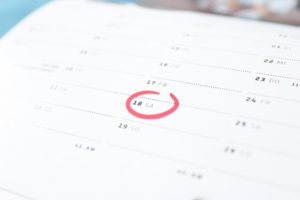If you’ve ever tried to do business with a celebrity, you know that it’s not actually the celebrity you need to impress — it’s their representatives. Representatives (like managers, agents, or publicists) handle their clients’ business deals, which means they act as the barrier between their clients and you.
You need to carefully navigate your interactions with representatives; in fact, you should approach a celebrity’s representatives with the same care as you would with the celebrity themselves. The goal is to demonstrate your value and your professionalism to the representative, and if you can do that, they’ll be much more likely to work with you.
One of the ways you can position yourself as a good potential business partner is by knowing how and when to follow up. Knowing how to follow up correctly can be the difference between making a deal and losing it, so today, we’re going to look at the best ways to follow up.
The first thing to keep in mind is that as a general rule, you should follow up by email. Representatives are incredibly busy, so email is the best way to ensure that your follow-up message is received and read. An unsolicited call from someone they don’t know to follow up on an email they may not even have gotten to yet will be a waste of the representative’s already-limited time. So while a phone call might seem like a faster way to get an answer from a representative, it also increases your chances that the answer will be “No.”
There are a few reasons why it’s better to follow up by email. First, an email means the representative will have all the information they need to make a decision in one place, which makes their life easier — with a phone call, you’re asking the representative to stop what they’re doing and dig through their inbox to find your first email, and they simply don’t have time for that.
On top of that, following up by email allows you to add the follow-up to your first message for the representative’s ease; all they’ll have to do is scroll down to see the original request. Lastly, an email sends the message that you understand how busy they are. A big part of professionalism is respect; in this case, you’re respecting the value of their time by not wasting it with a phone call.
There are some exceptions to following up by phone. For example, if you emailed an artist’s manager for availability on dates for a potential booking and haven’t heard back, it’s okay to check in by phone. If you’re not sure, ask yourself this: how long is the conversation going to take? If you can get the information you need 2 or 3 minutes, a phone call is okay; if it would take longer than that, save it for an email.
So let’s say you’re following up by email. The first question you need to ask yourself is, “How long has it been since I first reached out?” If it’s only been 24 hours, it’s not time for a follow-up just yet; reaching out too soon after your first email sends the message that you expect the representative to work on your time and not the other way around. (Not very professional.) That said, you also don’t want to wait too long before following up. If too much time passes, the representative isn’t going to remember your original request; on top of that, they’re going to wonder how serious you are about the opportunity if you waited a month to check back in.
Generally speaking, you should give it 3-5 business days before following up; that’s enough time that they’ll have had a chance to read your first email, but not so much time that they’ve forgotten about it.
Assuming an appropriate amount of time has passed, when you go to send your follow-up, keep a few things in mind. First, keep it brief — you don’t need to restate everything you mentioned in your first email, since they already have it. Second, don’t apologize for following up — a lot of people will begin their email with something like “I don’t mean to bother you,” which is a big mistake. It might sound polite, but what it’s really saying is “I have a feeling you’re annoyed that I’m reaching out,” which makes the representative wonder if they should be annoyed.
Third, acknowledge their busy schedule — a simple message that shows you appreciate how packed their schedule is will go a long way towards demonstrating professionalism. Nobody likes to feel like they’re being called out for not responding to an email — it makes them feel stressed. By acknowledging how busy they are, you’re giving them a built-in excuse for not responding sooner, which is something they’ll really appreciate.
Don’t think of a follow-up email as a chore that the representative hasn’t done yet. Instead, think of it as being a helpful potential business partner by jogging their memory about something that may have slipped through the cracks,which means you should be enthusiastic. If you come across as enthusiastic about a potential partnership, the representative is more likely to view it in a positive light.
Here are a couple sample follow-ups you can use:
Hi [Name], I appreciate that you’ve got a busy schedule, so I just wanted to touch base on the request below in case it slipped through the cracks.
Hi [Name], I reached out on [date of original message] about [<10-word summary] — when you get a moment, could you let me know if this is of interest to you?
Of course, there are always going to be occasions when you won’t hear anything back, even if you do everything right. That brings me to my final point: don’t follow up too much or too often. If you’ve already sent a follow-up email, give it another 3-5 business days before checking back in. And if you still don’t get a response after two follow-up emails maximum, you should take their silence as a “Not interested” and move on to your next potential partner.
The right follow-up message can be the difference between getting ignored and getting your foot in the door. So next time you want to check in with a representative, keep these tips in mind; you’ll have a much better chance of getting the answer you’re looking for.








